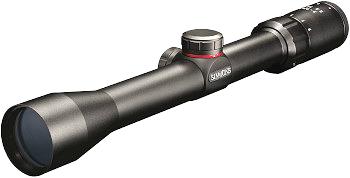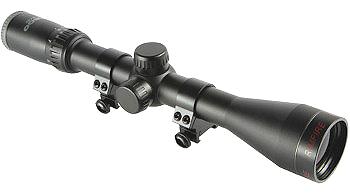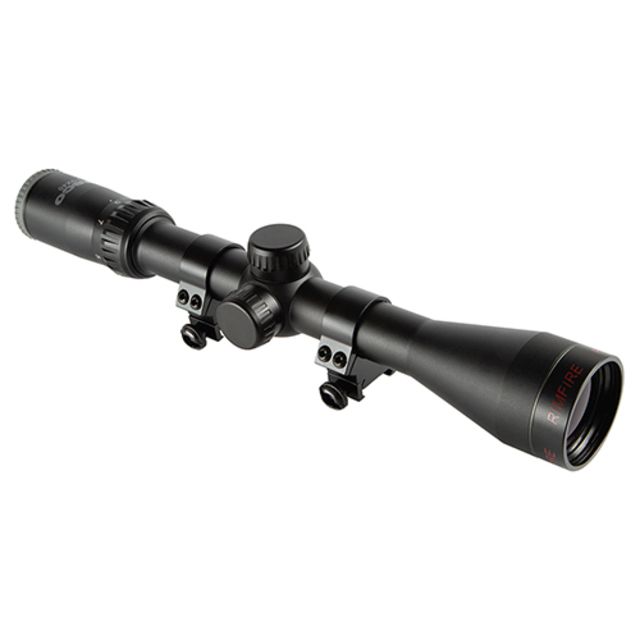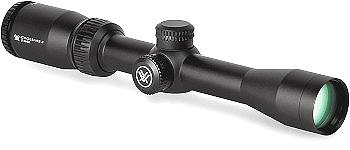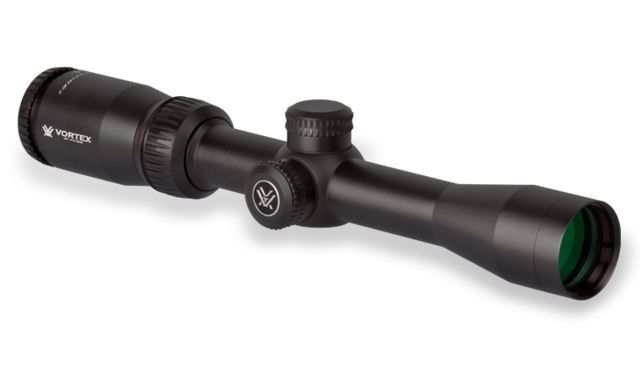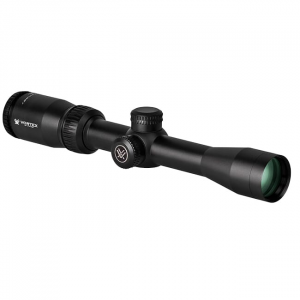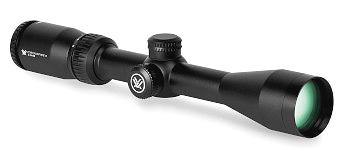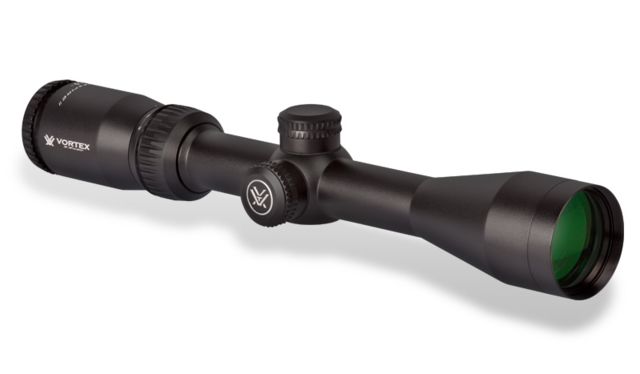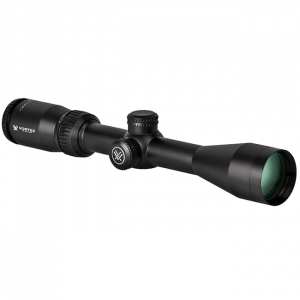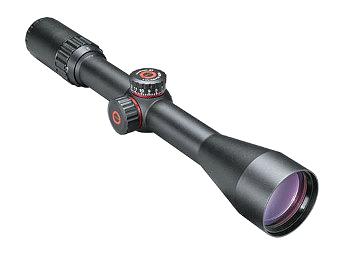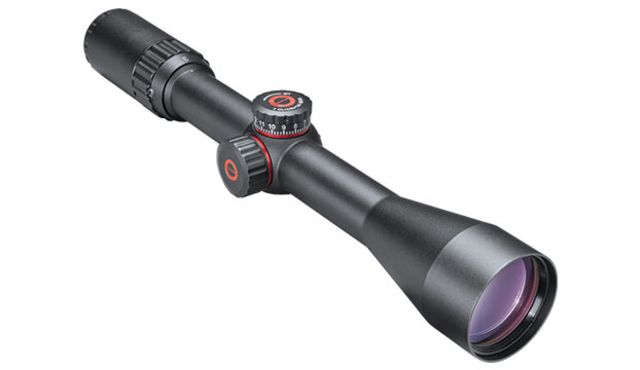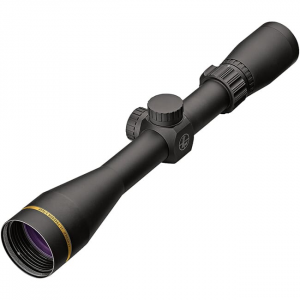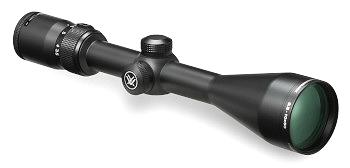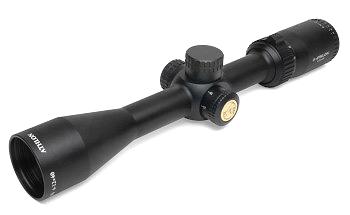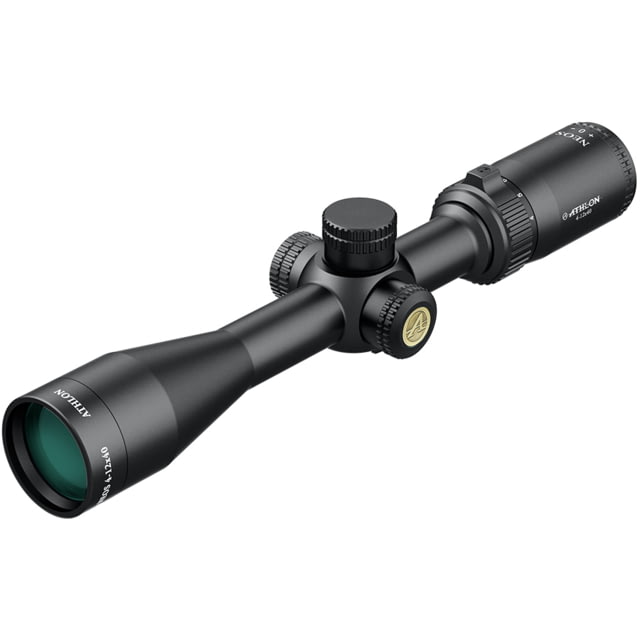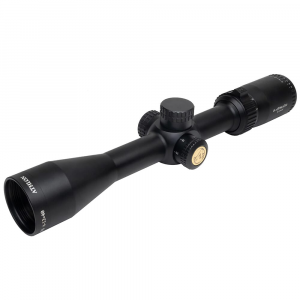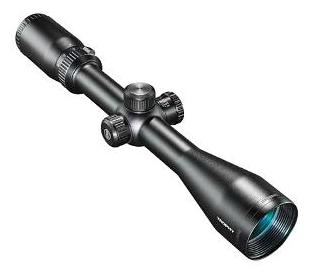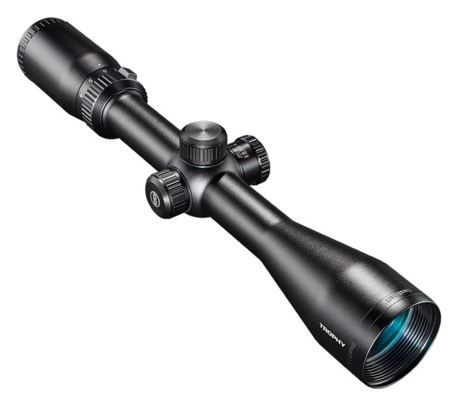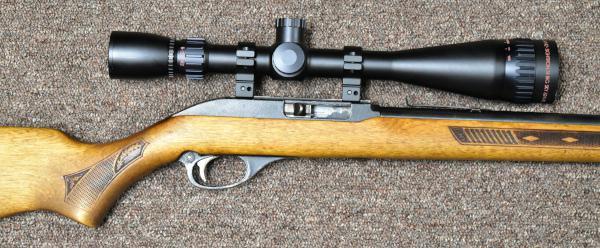As an Amazon Associate I earn from qualifying purchases. Amazon and the Amazon logo are trademarks of Amazon.com, Inc, or its affiliates.
The Marlin Model 60 is a semiautomatic 22LR rifle that is one of the most popular semi-automatic 22 guns on the market. First released in 1960, the Model 60 utilizes a tubular style magazine design versus a detachable magazine design found on the Ruger 10/22. Given the popularity of this Marlin model, it’s no surprise that shooters are routinely asking questions about scoping a 60. So, here’s an in-depth look at the 10 best Marlin 60 scope options on the market.
According to Marlin, they have sold over 11 million units of the Model 60 and claim that it’s the best-selling semi-auto 22 on the market. While I think the folks over at Ruger might argue that their Ruger 10/22 is more popular, it’s hard to really crown a king of semi-automatic 22 rifles.
One area where the 10/22 and Marlin 60 differ significantly is aftermarket parts and upgrades. While an entire industry of aftermarket parts for the Ruger 10/22 has been established, there are very few aftermarket parts or upgrade options for the Marlin 60. As the 10/22 has a somewhat modular design, a shooter can upgrade the barrel, stock, and trigger fairly easily. With the Marlin 60, only a few aftermarket options are available, and most of those are focused on replacement stocks.
Before I get into the nitty-gritty details about scopes for the Marlin 60, I wanted to take a second and provide a bit more information on the gun itself.
History of the Marlin 60
As mentioned above, the Model 60 was designed and introduced to the market in 1960. It was based on the Marlin 99 but featured several changes to make it less expensive to produce compared to the Model 99. Those changes included:
- A stock made from less expensive birchwood versus the walnut stock found on the Model 99.
- The tubular magazine was switched from steel (which had a tendency to rust) over to brass, which was less expensive and not prone to rust.
- The barrels were made with a 16-groove design using Marlin’s patented Micro-Groove rifling, which was less expensive than traditional rifling methods.
Those changes made the Marlin 60 much less expensive to manufacture, so Marlin offered this firearm at a significantly lower cost than other semi-automatic 22 rifles on the market. Even today, the Model 60 is a budget-friendly option if you are in the market for a semi-automatic 22 semi-auto gun.
The success of the basic Model 60 rifle led Marlin to introduce several Model 60 variants and commemorative models. At last count, Marlin had offered the Model 60 in 35 different variants, including models:
- In stainless steel
- With polymer stocks
- With Laminate stocks
- With upgraded wooden stocks
- Specialized models down for the NRA, Cabela’s, and other organizations
- Private label versions that were made for brands like Montgomery Ward, Western Auto, etc.
I have a mid-1980s Marlin 60 with a shorter magazine tube that only held 15 rounds and featured a last-round fired open bolt feature. When I first received the rifle (Christmas present), I mounted an inexpensive Tasco 4x scope on it and managed to put a dent in the local squirrel and rabbit population. That firearm is a sweet shooting gun that was surprisingly accurate for the cost, despite having a long and heavy trigger pull. It’s also the gun that is pictured on this page. Even though this rifle is well over 30 years old and starting to show its age, it’s still an excellent shooter.
The 60 comes equipped with factory open sights, and a receiver features a Weaver groove along the top made for easy scope mounting. The weaver groove is built to accept any grooved 3/8” scope mount. I’ll go over the scope mounting options for the Model 60 down below.
10 Best Scopes for the Marlin 60
Here are my top 10 scope recommendations for the Marlin 60 based on factors like:
- The overall cost of the rifle
- Typical shooting distances
- Most popular uses for the Marlin 60
Although my suggestions are geared more toward cost-effective scope options for this rifle, they are also geared toward rifle scopes that offer good value for the money.
For each scope that I discuss below, I’ve included some basic information, along with the features or things that I like and don’t like about each model. I’ve also included some additional scope buying suggestions in a Marlin 60 scope buyer’s guide that can be seen down below.
Simmons 22 Mag 4×32 (Model 511022)
For me, no list of top-rated scopes for most any .22 rifle is accurate or complete without at least one fixed 4x power scope, and the Marlin 60 is no exception.
If you’re shopping for a nice 4x powered scope that won’t break the bank, then the Simmons 22 Mag 4×32 model might be worth checking out.
Now, some shooters might be hesitant to use a scope called the 22 Mag scope on a 22LR, thinking that the scope was only designed to be used on a 22-mag, but let me put your concerns to rest. The 22 Mag name of this scope series is just a name that Simmons opted to use as these scopes are NOT specially designed to be used with a 22 Magnum firearm.
The 22 Mag series of scopes will work just fine with any caliber, including the 22 Long Rifle.
Like most scopes in the sub-$50 price range, the optical quality is about what you would expect but is not bad for the cost.
This model uses the Simmons TruPlex reticle, which is basically Simmon’s version of a duplex. This reticle style mates up to the shorter ranges of the 22LR quite well.
Like most fixed power scopes, the big draw with this model is its simplicity. It’s a point-and-shoot solution in most scenarios, without any dials to turn or adjustments to make. The ease of use is popular with plinkers or hunters that want to spend more time shooting and less time adjusting a scope.
This gun scope model is available in a matte finish and a silver finish.
Pros
- Excellent entry-level price if you want an inexpensive yet brand-name scope.
- Most models include a set of scope rings built for a weaver rail (which means they will work just fine on a Model 60)
- At 8.6 ounces, this is a lightweight option for a reasonably light rifle.
Cons
- As mentioned above, the glass is average to below average, but that’s to be expected in this price range.
- Features a fixed 50-yard parallax, which is standard for scopes at this price point.
- This model was offered in a clam pack version and in a boxed version, which can be confusing for some buyers who are expecting the scope in a traditional box.
If you are interested in this 4×32 Simmons 22 Mag scope, here are a few of the better deals I found:
Tasco 4×32 (Model TRF432)
Although you don’t really see or hear much about the Tasco line of scopes these days, they are very much alive and well in the optics industry. Tasco Optics (also known as Tasco Worldwide) specializes in entry-level and budget-oriented optics, including a series of entry-level scope optics.
Built specially for 22 rifles, the Tasco 4×32 is an entry-level fixed 4 power scope built on a 1-inch tube. This model is equipped with Tasco’s Truplex Duplex reticle, which is Tasco’s version of a traditional duplex reticle.
Most of these Tasco models come equipped with a set of Tasco rings made for use on a Weaver rail.
The optical quality on this scope is average and about what you would expect for a rifle scope in the sub-$50 price range.
Pros
- With a length of 11 inches and a weight of 9.2 ounces, this is a light and compact option for a Model 60.
- Well priced for an entry-level scope, especially if you are on a tight budget.
Cons
- Typical of a 4x scope, this model is equipped with a fixed 50-yard parallax.
- Glass is lower quality, but what you would expect for an optic in this price range.
If this 4×32 Tasco scope looks interesting, here are a few places where I located it for sale:
Vortex Crossfire II 2-7×32 Rimfire (Model CF2-31001R)
If you were shopping for a lower-powered scope with better-than-average glass coupled with a great warranty program, then the Vortex Crossfire II 2-7×32 Rimfire scope may be worth checking out.
Unlike some other models in the Crossfire II line of scopes, this scope is built specifically for use on a 22 caliber rifle. Vortex also offers a centerfire-specific version of their 2-7×32 Crossfire II scope, but it’s better suited for centerfire calibers.
This scope is built on a 1-inch tube and features a 32mm objective. Unfortunately, it’s only available with Vortex’s V-Plex reticle.
Although the Crossfire II scopes are marketed as one of Vortex’s entry-level families of riflescopes, the optical quality on this 2-7×32 model is better than average for a rifle scope in this price range.
Pros
- Backed by one of the best warranty programs in the optics industry.
- Glass is better than many other scope brands in this price range.
- Well built and durable.
Cons
- Features a fixed 50-yard parallax correction, which isn’t a deal-breaker, but I wish they offered it with adjustable parallax that would adjust lower than 50 yards.
- Weighs in at nearly 15 ounces, making it heavier than many other scopes on this list.
Here are links to the best deals and sales I found for this Vortex 2-7 scope:
Leupold VX-Freedom 2-7×33 Rimfire (Model 174179)
The VX-Freedom series is Leupold’s entry-level scope family but offers an excellent value for the money. This 2-7×33 model is one of only two dedicated rimfire models in the VX-Freedom scope family.
This Leupold scope features Leupold’s Rimfire MOA reticle, which offers bullet drop compensation ability at ranges longer than 50 yards. Note that this reticle is not 22LR specific, and the BDC drops have to be manually calibrated. That being said, I like BDC functionality for a 22LR if you are taking shots past 75 yards.
Built on a 1-inch tube, this scope features a fixed 60-yard parallax with a 3:1 zoon ratio. The 2-7 power range is ideal for a 22 rifle as it can be adjusted down to the 2x or 3x power for close-in targets, then powered up to 7x for longer range targets.
While this scope is not an inexpensive option, the glass quality is good for a 2-7 model.
Pros
- Versatile reticle that can be used for longer-range targets.
- Good glass for this lower power range.
- Light and compact option for a model 60.
Cons
- A more expensive option in the 2-7 power range compared to other 2-7 powered scopes and could potentially cost more than the rifle.
If this 2-7 power version of the VX-Freedom scope series looks interesting, here are a few places I found with discounted or sale prices on this model:
Vortex Crossfire II 3-9×40 Dead-Hold BDC Reticle (Model CF2-31007)
If the 2-7 power range isn’t enough magnification for you, then the next step up would be something in the 3-9 power range. One excellent option for a 22 rifle in the 3-9 range is the Vortex Crossfire II 3-9×40.
Vortex offers two 3-9 models in the Crossfire II scope family, a 3-9×40 and a 3-9×50. Between the two, I prefer the 3-9×40 model for a lightweight semi-auto rifle like the Marlin 60.
This scope is available in 3 different reticle options:
- Dead-Hold BDC reticle
- V-Brite reticle
- V-Plex reticle
My favorite is the Dead-Hold BDC option between the three reticle options, as it offers the ability for more long-distance shooting via BDC marks built into the reticle.
If you happen to be interested in a scope with an illuminated reticle, then this Vortex scope with the V-Brite reticle would be a good option as well.
The 3-9 magnification range is versatile enough to meet the shooting needs of almost any .22LR rifle.
Like the 2-7 version I discussed above, the optical quality on this scope is better than average for a sub-$200 piece of glass.
Pros
- Good magnification range for the 22LR caliber.
- Well-built scope that is durable and should last for years.
- The BDC-based reticle offers the ability to shoot longer distances if needed.
Cons
- The single biggest con that I have with this particular scope is the fixed 100-yard parallax point. While the 100-yard parallax is relatively common with 3-9 scopes, I’d really like to see Vortex offer this model with an adjustable parallax that would focus down below 50 yards.
If you are in the market for this Vortex Crossfire II scope, here are a few locations where I found it for sale:
Simmons ProTarget Rimfire 3-9×40 (Model SRF3940)
If you’re in the market for a .22 scope with 22LR integrated bullet drop compensation capacity, then it might be worth the time to have a look at the Simmons ProTarget Rimfire 3-9×40.
As the name implies, this scope is specifically made for use with a rimfire and comes with a BDC-based 22LR and 17HMR elevation turrets. Once sighted in, the elevation turrets are dialed to the specific shooting distance, and the 22 LR bullet drop is automatically built-in. Here’s some additional information if you are not familiar with bullet drop compensation.
This scope model is built on a 1-inch tube and features a fixed 50-yard parallax setting. It also comes with 1-inch Weaver rings that will fit the Weaver rail on the Marlin 60.
The ProTarget 3-9×40 is an entry-level scope with BDC functionality at a sub-$100 price point.
Pros
- The bullet drop compensation is a nice feature, but this scope also functions well without using the BDC feature.
- Once configured, the BDC function allows for longer range shooting without having to make hold-over adjustments.
- Weighing only 11 ounces, this is a lightweight optic for a Marlin or Glenfield Model 60.
Cons
- The BDC feature has to be configured and is tied to specific 22LR bullet weights.
- The glass is so-so, even for an entry-level scope.
- Comes with a fixed 50-yard parallax, but I’d prefer an adjustable focus option.
I located this scope model for sale at the following locations:
Leupold VX-Freedom 3-9×40 Rimfire MOA Reticle (Model 174181)
This VX-Freedom model is the 2nd of the two dedicated rimfire scopes that Leupold offers in the VX-Freedom scope family.
Built on a 1-inch tube, the 3-9 power range is ideal for situations where a bit more magnification is needed on your 22.
This scope model shares a number of features with the Leupold VX-Freedom Rimfire 2-7 version mentioned above, including:
- Comes equipped with Leupold’s Rimfire MOA reticle.
- Also built with a 60-yard fixed parallax feature.
As mentioned before, the Rimfire MOA reticle can be used for longer range 22 shooting but will require some configuration and testing to learn the bullet drop distances for each hash mark.
It’s also worth noting that this reticle can be used as, and functions well as a standard duplex reticle.
Pros
- Good glass, but it’s not an inexpensive scope.
- The Rimfire MOA reticle is very versatile and can be used as a duplex or used for bullet drop compensation.
- Excellent warranty coverage (which can’t be said for every scope on this list).
Cons
- Priced on the upper end of rifle scopes on this list.
- Comes with a fixed 60-yard parallax feature, which is not a huge deal, but I’d prefer Leupold offered it with an adjustable parallax option.
Listed below are a few locations where I located this specific Leupold scope either on sale or at a discounted price:
Vortex Diamondback 3.5-10×50 Dead-Hold BDC Reticle (Model DBK-03-BDC)
If you like the Vortex brand of scopes and want to look at a magnification range that was a little more than 3-9, then I’d suggest having a look at the Vortex Diamondback 3.5-10×50 scope with Dead-Hold BDC reticle.
The Diamondback offers slightly better optical quality over the Vortex Crossfire II line of scopes that I discussed above, but it comes at a slightly increased price point as well.
This scope is available in two different reticle options:
- Dead-Hold BDC
- V-Plex
Between the two, I much prefer the Dead-Hold BDC reticle over the V-Plex. The BDC capability on the Dead-Hold reticle gives you the ability to potentially reach out farther and more accurately compared to a traditional duplex reticle.
However, if you don’t care for the BDC function, the more traditional V-Plex reticle model can be found here. Note that the V-Plex is less popular and can be more challenging to locate for sale.
The 3.5-10 power range offers a slight increase in the magnification range with minimal additional weight compared to the 3-9 models. This scope is also slightly longer than the 3-9 versions.
Pros
- Good glass and optical quality for this price range.
- The BDC-styled reticle is versatile and can used as a duplex or used for longer-distance targets.
- Backed by a great warranty program.
Cons
- Although the added weight associated with the increased power range is minimal, this scope weighs 16.2 ounces. This puts it on the heavier side when mated to a rifle that weighs 5.5 pounds.
- The 50mm objective means that you may have to use higher rings, which places the scope farther off the rifle bore.
If you are shopping for this scope or interested in it, here are a few places that I found it for sale:
Athlon Neos 4-12×40 BDC 22 Rimfire (Model 216010)
For those who prefer a scope with a magnification range higher than the traditional 3-9 models, the Athlon Neos 4-12×40 BDC 22 Rimfire scope could be an option.
While the Athlon brand of scopes is not as well known as Leupold or Vortex, they offer good quality optics at very reasonable prices.
Like several of the scopes I’ve discussed, this Neos scope is explicitly built for the 22 caliber as it features a reticle designed for use with a 22 caliber.
The Neos series of riflescopes is Athlon’s entry-level scope series but has some features typically found on more expensive scopes.
The 4-12 power range is also highly versatile and can be used for both short-range and mid-range targets. In addition, the specific 22 based BDC reticle gives shooters the ability to extend the shooting distances as well.
Built on a 1-inch tube, this scope model also features a side focus option that will focus down to 10 yards.
Pros
- This model features a side focus adjustment that focuses down to 10 yards, which is a feature not typically included in a sub-$200 scope.
- The optical quality is better than expected at this price point.
- Good warranty program for this brand.
Cons
- Weighs just a shade over 18 ounces, which is typical for a 4-12 power scope. However, as the power magnification increases, the weight typically increases as well.
- Athlon is an outstanding scope brand but not as well-known as some of the major optical brands on the market.
If this specific Athlon scope interests you, here are a few locations where it’s for sale:
Bushnell Trophy 4-12×40 with Multi-X Reticle (Model 754120)
The final scope on this list is the Bushnell Trophy 4-12×40 model with the Multi-X reticle. This scope has quite a bit going for it, so it’s definitely worth a look.
This model is built on a 1-inch tube with a 4-12 power range. I’m very fond of that power range for the Model 60. It offers a low enough power for close-in shots and more than enough magnification for situations when you need to shoot farther distances or need increased magnification for pinpoint shooting.
I really like this Bushnell scope because it is built with a side focus (which I like) that will focus down to 10 yards. You can’t ask for a better parallax or focus adjustment for a 22 rifle.
For a scope priced below $200, the optical quality is very good, with edge-to-edge clarity.
The Multi-X reticle is Bushnell’s version of a duplex where the posts taper down to a finer crosshair.
Pros
- Side focus that adjusts down to 10 yards is huge in my book and a fantastic option for a 22 rifle.
- Surprisingly, good glass in this price range
Cons
- At 16.4 ounces, this scope isn’t the heaviest model on this list, but it’s also not the lightest either.
- While I like the Multi-X reticle, I’m not in love with how thick the posts are until they begin to taper. It’s a small detail that probably only bothers me but is worth mentioning.
Here are the best prices that I could locate on this Bushnell rifle scope:
Marlin 60 Scope Mounts
The grooved rail on the Marlin Model 60 is a Weaver-style rail that is 3/8” wide. This rail will accept any set of scope rings made or marked to fit a:
- Weaver rail
- 3/8” rail
To be clear, “scope rings” can mean either a set of two rings or a single-piece mount that includes two rings. Unfortunately, that seems to be a point of confusion for people who see a one-piece scope ring unit and think it doesn’t qualify as scope rings.
 |  |
Model 60 One Piece Scope Mount | Model 60 Two Piece Scope Mount |
Between one-piece and two-piece rings, I prefer the two-piece rings that come in a set. I find that the two-unit configurations are easier to mount, which means it’s easier to set the eye relief.
The rail on the 60 is very thin at the base, and because of that, certain types of scope rings or bases are notorious for not mounting or fitting well. This can cause the scope to shift or move up and down the rail, especially after several hundred rounds of the bolt, impacting the receiver when cycling.
When I first received my Marlin 60, my father and I went to a local gun store to get some help choosing a scope mount and having the scope mounted. One of the gun store employees suggested a set of very inexpensive rings for my gun and then mounted the scope on those rings for me.
A few months after my father helped me sight the rifle in, I noticed that I started missing what I considered relatively easy shots on squirrels and rabbits. I assumed that I was the problem and I was just a really bad shooter. Eventually, I happened to go squirrel hunting with one of my uncles.
After watching me miss a few squirrels, he asked if he could take a shot at the next squirrel we saw. Now, he was an excellent shooter (at least, in my opinion), and he proceeded to miss the next squirrel twice. He suggested that I shoot his rifle the rest of the morning and that we check the zero on the gun. The idea that the scope zero might be off had not crossed my 14-year-old mind as I was still learning the ropes about guns and hunting.
The following Saturday, we shot my Marlin to check the zero. To say it was off was an understatement. When my uncle was finally able to figure out where the shots were impacting, the gun was at least two feet off to the left of the target and then probably six inches low from the bullseye.
When my uncle started taking a closer look at the scope and the mounting, he showed me where the mounts had shifted forward on the rail, which had thrown off my point of impact. Suspecting that the inexpensive (I’m using that word instead of cheap)
Under normal circumstances, I usually have two or three different scope rings that I like for each rifle. However, in the case of the Marlin 60 or Glenfield 60, I really only like scope rings from a single manufacturer: BKL Technologies.
BKL Scope Rings for the Marlin/Glenfield 60
Based out of Texas, BKL Technologies is another brand of top-quality rings and bases that I really like, especially for the Model 60. They are not as well known as ring brands like Talley or Leupold but are exceptionally well built and affordably priced.
I’ve got BKL rings mounted on several different rifle set-ups and have not been disappointed with their performance and value for the money.
I lean towards the BLK rings for the 60 because they are built to really bite into the rail. This makes them rock solid and ultra-stable. Once I get the scope positioned where I prefer on the Model 60, I usually dab a bit of blue Loctite on the screws that mount to the scope rail to ensure that they don’t loosen up over time.
My Model 60, featured in the images on this page, has BKL rings on it.
BKL Marlin 60 Rifles - 3/8" - 1 Inch Rings |
Low Rings - Works with 1 inch scopes with an objective up to 44mm |
High Rings - Works with 1 inch scopes with an objective from 44mm up to 50mm |
BKL 257H 0.6" Long Dovetail Rings High - for 1" Scope Tubes - Fits 3/8" or 11mm Dovetails - Matte...
$35.89
in stock
3 new from $35.89
as of April 25, 2024 12:43 pm
Amazon.com
|
Marlin 60 Scope Buyer’s Guide
In this brief guide, I’ll go over some of the primary features and topics to take into consideration when you are choosing a scope for a Marlin 60.
Some of the topics I’ll touch on include the following:
- Scope Magnification Range
- Scope Objective Size
- Reticle Options
- Tube Size
Let’s go over each of these sub-topics in a little more detail.
Scope Magnification Range
When it comes to purchasing a new riflescope or outfitting a rifle or gun with an existing scope, one of the critical factors to consider is the scope magnification range.
Scope magnification is measured in a numerical power rating, and that rating is the magnification of what the average person sees with the naked eye. For example, a fixed six-power scope has a magnification of 6 times what the average human eye can see in distance and clarity. A 3-9 powered rifle scope would start with a magnification range of 3 times the naked eye and max out with a magnification range of 9 times what the naked eye sees.
When it comes to choosing a scope for a Marlin 60, there really is no right or wrong answer in terms of the ideal magnification range.
However, if you look at factors such as:
- The typical shooting range or distance with this specific rifle
- The most common type of shooting or hunting done with the 60.
- The entry-level price point of this rifle
It’s not hard to figure out that the fixed power scopes or scope models on the lower spectrum of power magnification tend to be the best fit. That’s not to say that you couldn’t mount a Nightforce NX8 4-32×50 F1 scope on a Marlin 60 because it’s a free country, but that scope seems like a bit of overkill on a $130 gun.
I’ve mounted every from a fixed 4x scope to a 5-20 powered scope on a Marlin Model 60, so the choice is entirely up to you. That being said, in my experience, the scopes I discussed above are all excellent options for the Glenfield 60.
Scope Objective Size
The scope objective size terminology refers to the size of the objective, and it’s usually the last number seen in the typical scope power listing. For example, a scope that is labeled as a 3-9×40 would be a scope with a 3-9 magnification range, with a 40mm objective. A rifle scope marked as a 6-24×50 model has a 6-24 magnification range and a 50mm objective. The objective measurement is always displayed in millimeters.
This number is relevant because it plays a role in how closely the scope can be mounted over the rifle bore. In a perfect world, you want the scope mounted as close to the bore as possible. The larger the scope objective, the higher the scope has to be mounted over the bore.
The higher the scope is mounted over the bore can cause issues with natural head placement on the stock and with ballistics at shorter ranges.
For the Marlin Model 60, I’d suggest staying with a scope objective under 44mm. All the scope models that I listed above feature objectives at or under the 44mm size.
Reticle Options
There were only a few reticle options to choose from when I was growing up, and most were very slight variations on a duplex (or were a standard duplex).
Today, there are hundreds (maybe even more) of reticle options on the market, with almost every scope brand offering its own reticle designs.
Since the Model 60 is an entry-level, budget-friendly rifle, it stands to reason that most shooters will be trying to scope that rifle on a budget as well.
Most of the entry-level scopes that I mentioned above are equipped with either a duplex reticle, a duplex-based variant, or an entry-level BDC reticle.
Either of those reticle options is an excellent choice for the Model 60 22.
Tube Size
When discussing the tube sizes of riflescopes, the two most common tube sizes are:
- 1-inch tubes
- 30mm tubes
Scopes built on a 1-inch tube have been around longer and are still the most popular and standard tube size on the market today. Typically speaking, 1-inch scope models tend to weigh less and cost less than their 30mm counterparts.
30mm scope tubes are becoming more and more popular, especially for specialized types of shooting such as long-distance, tactical precision, and long-range hunting.
While a 30mm scope tends to weigh more than a 1-inch model in the same power magnification, the 30mm model offers a greater range of internal adjustments for scope windage and elevation.
Looking at the most popular types of shooting and hunting done with the Model 60, I’d recommend a 1-inch tube scope over a 30mm model. All the rifle scopes that I suggested above are 1-inch models.
FAQS
Here are some commonly asked questions that I see or hear regarding scopes for a Marlin or Glenfield Model 60:
What kind of rail is on a Marlin 60?
The Model 60 is built with a scope rail integrated into the top of the receiver. This rail is a Weaver-style rail that is 3/8” wide.
As I’ve been researching scope mounts for a Marlin-Glenfield 60, I see “scope mounts” and “scope rings.” What’s the difference?
Typically, there isn’t all that much difference between those two terms as they both mean almost the same thing. Both terms are used to describe slightly different attachments that mount a scope to the rail on the Model 60.
Scope mounts is usually the term used to describe a single-piece mounting unit, while scope rings are the term that is typically used to describe a set of rings used in the scope mounting process.
As I mentioned previously, between the two types of mounting options for the Model 60, I prefer using scope rings as I’ve always felt that they offered a greater range of potential adjustment range when mounting a scope. That being said, there is absolutely nothing wrong with using a single mount as well.
Does a Marlin 60 have a Picatinny rail for mounting a scope?
A standard Marlin 60 is not equipped with a Picatinny rail from the factory. The rifle comes with an integrated 3/8” Weaver rail.
However, if you wanted a Picatinny rail, aftermarket adapters are available for the Model 60 that will convert the Weaver rail over to a true Picatinny rail.
The Model 60 Picatinny rail I like the most is this one from DIP Products: Marlin 60 3/8” Picatinny Adapter.
Choosing a Marlin 60 rifle scope doesn’t have to be a challenging process. Hopefully, the scope suggestions made above will help in the decision-making and buying process.
I’ve been working in the firearms and sporting optics industry for over 20 years, with a personal and professional interest in all things related to rifle scopes, Through a combination of work experience, formal training, and personal experiences, I have extensive experience mounting, testing, and evaluating different rifle scope models across most major optical brands.




